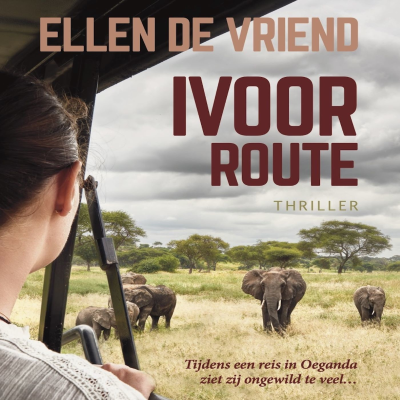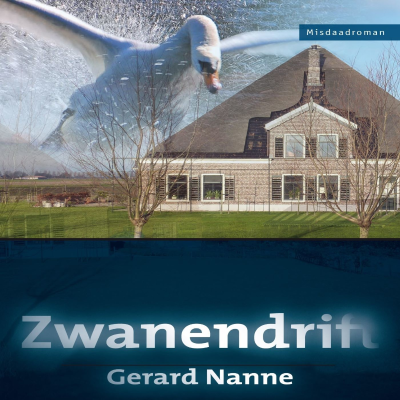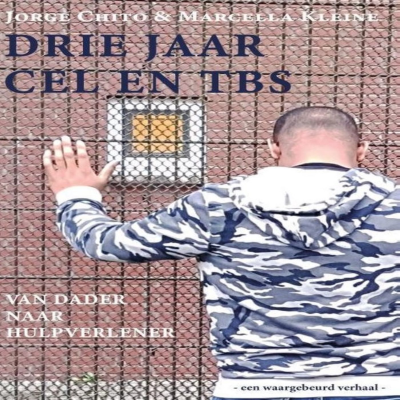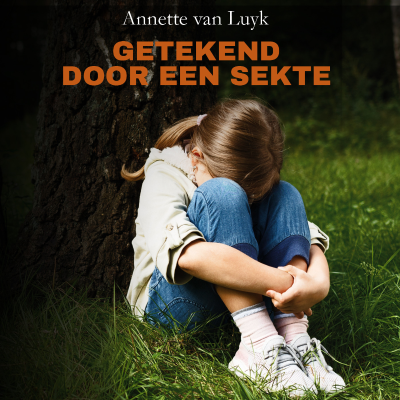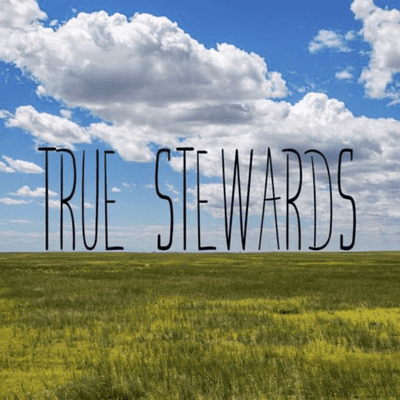
True Stewards
Engels
Technologie en Wetenschap
Tijdelijke aanbieding
1 maand voor € 1
Daarna € 9,99 / maandElk moment opzegbaar.
- 20 uur luisterboeken / maand
- Podcasts die je alleen op Podimo hoort
- Gratis podcasts
Over True Stewards
Listen in on casual conversations with farmers, ranchers, and their conservation partners to learn more about how they steward roughly 1 billion acres - just shy of half the land in the Lower 48 states. Conservationist Jackson Moller introduces you to these innovative and hard-working people, giving you a better connection to the source of your food and a deeper appreciation for other public benefits provided by these working lands, such as scenic views, clean air and water, wildlife habitat, and climate resilience. For more information visit TrueStewards.com.
Alle afleveringen
13 afleveringenJen Livsey – Multi-Generational Commitment to Work with Nature in Colorado’s Eastern Plains
Jen Livsey plans and manages grazing on her family’s commercial cow/calf ranch, the Flying Diamond in eastern Colorado. Jen has an MS in Ranch Management from the King Ranch Institute and is the owner of EastCo, a pasture and livestock insurance group. As Jen puts it, the family’s philosophy has been to leave things in better condition than they were found and to take steps to ensure the ranch passes on to the next generation. It seems to be working, as The Flying Diamond Ranch has been in the family for more than 100 years. Our conversation was filled with laughter, covering a wide range of topics such as the Kit Carson biography “Blood and Thunder” and ranching for profit by layering multiple revenue streams. We also talk about tools to manage for drought, the disconnect between agriculture and consumers, and using Instagram to hire a ranch hand. Listen to the end for speculation on the ways ranching might change in our lifetime. Enjoy! --- FULL EPISODE NOTES WITH LINKS @ https://truestewards.com/jen-livsey --- --- TOPICS DISCUSSED --- 1:30 – Getting to know Jen Livsey and the Flying Diamond Ranch in Colorado 4:15 – Comparing the beef cattle business to poultry and pork 6:30 – Peering into the crystal ball of regenerative agriculture 10:00 – Grazing cattle are an integral part of the grassland ecosystem 12:25 – Ranching for profit and keeping the ranch in the family 17:15 – Layering multiple revenue streams and expansion via leases 21:30 – Tools to manage for drought 25:35 – Great new hire via Instagram 29:25 – Attracting the brightest minds to agriculture and managing our natural resources 32:30 – Disconnect between agriculture and consumers 37:25 – Efforts to improve communication between ag and consumers in Colorado 40:35 – In what ways will ranching change in the next 30 years? 44:25 – Integrating grazing on cover crops and transitioning marginal cropland back to rangeland
Trey Patterson - Tradition, Innovation & Excellence at the Padlock Ranch in Wyoming
Trey Patterson is a thoughtful steward at the Padlock Ranch in northern Sheridan County, Wyoming and southern Big Horn County, Montana. Trey and his team are committed to achieving balance among five elements of purpose in order to put the Padlock Ranch in position to be here for generations to come. * Human excellence – having good people * Preservation of our natural resources * Being a positive contributor and influence in the community – both local and within the ag industry in general * Financial excellence – being profitable to be sustainable * Being an emblem for the ownership family We had a fun conversation winding from the depiction of ranch life on the hit series “Yellowstone” to the limitations or challenges within academia of researching biological systems. We talk about the balance between tradition and innovation, the availability of water in the context of encroaching development, and – with the abundance of information available at our fingertips – how to tell the difference between good information and bad information. I hope you enjoy this episode with Trey! --- FULL EPISODE NOTES WITH LINKS @ https://truestewards.com/trey-patterson --- --- TOPICS DISCUSSED --- 1:43 – Trey Patterson’s path to the Padlock Ranch 4:25 – The Five Elements of Purpose at the Padlock Ranch 9:19 – Balance between tradition and innovation 13:46 – Discussing management practices that enhance biological systems 18:20 – Thinking of time-controlled grazing as a way to replenish your bank, which is your soil and root structure 24:05 – Unmanaged or ungrazed grasslands 28:23 – Working with conservation groups to improve water systems on the ranch 31:25 – Professional development for ranchers and the importance of verifiable information 34:04 – The limitations of academia when it comes to systems work 35:50 – Urban encroachment, hobby farms, and the availability of water 37:38 – The importance of a safe, nutritious, and affordable food supply 39:52 – Using life cycle assessments to better understand contributions to greenhouse gas emissions 45:20 – Comparing the beef cattle industry in the US to other regions of the world 47:00 – Why is the consumer perception of what producers do different from what farmers and ranchers say they do?
Stacy Davies - Rural-Urban Interdependence and Finding New Ground in the Great Basin
Stacy Davies is a thoughtful steward committed to using natural systems or what he calls “biologically driven management” at the Roaring Springs Ranch in Oregon. Stacy credits his time under Doc and Connie Hatfield as well as a Holistic Management workshop in the late 80s as the beginning of his journey in holistic thinking and using natural systems to manage a ranch. Stacy knows you must be flexible enough to adapt to nature’s complexity in order to take advantage of the symbiotic relationship between the cattle and the grasslands ecosystem that supports them. Conditions are constantly changing so Stacy and his team try to stay on top of things by using a suite of technology to monitor the plants and animals on the Roaring Springs Ranch. They are committed to science-based decision making and partner with a host of conservation scientists and researchers to increase our scientific knowledge of range management. Beyond his holistic philosophy on range management, Stacy is focused on long-term sustainability, not only for his operation or his community, but for rural communities all across the US to prosper economically, socially and ecologically. Our conversation hits on the interdependence between rural and urban communities, the importance of valuing the environmental benefits provided by our working lands, and how consumers can help influence the way ranches are managed. I hope you enjoy! --- FULL EPISODE NOTES WITH LINKS @ https://truestewards.com/stacy-davies --- --- TOPICS DISCUSSED --- 1:40 – Getting to know Stacy Davies and the Roaring Springs Ranch in Oregon 3:49 – Managing for biological and ecosystem health 6:00 – Candidate Conservation Agreement with USFWS for the Great Basin redband trout 8:35 – Using natural systems to manage the ranch 10:35 – Implementing management strategies that benefit the environment and soil health 11:35 – Fire effects on vegetation and succession, and the importance of edge effect 15:03 – Science-based decision making and increasing our scientific knowledge 17:48 – Stacy’s goal on the ranch and the value of private land stewardship 19:42 – How consumers can influence the way ranches are managed 21:50 – Rural-Urban interdependence 23:02 – How valuing the environmental benefits provided by our working lands can better reward good management 26:16 – Consolidation of ranches, its impact on rural economies, and why folks in cities should care 30:11 – Discussing how to appropriately incentivize lessees to improve their management practices 35:45 – Fear of unknown, perceived complications deter some folks from taking advantage of conservation programs 39:32 – Keeping an open dialogue between ranchers and consumers, and recognizing the dependency on one another 41:15 – The things that motivate Stacy and other ranchers, and Stacy’s challenge to podcast listeners
Hans Herkert - Rice Fields for Wildlife in California's Central Valley
Hans Herkert, a first-generation rice farmer in California’s Central Valley, and I talk quite a bit about the ways rice fields serve vital ecological functions – including raising salmon and providing temporary shorebird habitat during migration. There is an emerging awareness or recognition that ecosystem services are crucial to maintain a hospitable planet for human life, and we find ourselves in a position where we must use preservation, restoration, and biomimicry on working lands. Coming from a small town heavily dependent on agriculture, and with extended family in the farming industry, Hans got his career started serving in a support role and then took the plunge in 2011 by acquiring a lease on a 154-acre field. The bird and wildlife benefits from rice field management were always at the top of mind for Hans, and I learned quite a bit about the evolution in California from burning rice straw after the harvest to now flooding the fields to decompose it instead. By recreating floodplains that used to exist naturally, rice farmers like Hans are providing critical wildlife habitat and building climate resiliency. Hans and I talk about the emerging research and pilot programs attempting to value these kinds of ecosystem services, including a recent study by University of California and the California Rangeland Trust. We talk about a few conservation programs that incentivize farming practices that maximize benefits to wildlife, the potential challenges scaling up these programs, and one of the biggest challenges facing California: the demands for water. Hans is a thoughtful steward of the land and I hope you learn as much as I have from our conversation. --- FULL EPISODE NOTES WITH LINKS @ https://truestewards.com/hans-herkert --- --- TOPICS DISCUSSED --- 1:39 – The path from growing up in Colusa to that first lease 4:12 – Not your grandfather’s rice field – how is rice farmed today? 6:45 – The ecological impact of flooding rice fields after the harvest 7:57 – Water in the context of rice production plus the benefits in recreating floodplains that used to exist naturally 11:02 – Recent studies attempting to value these ecosystem services 12:05 – Incentive programs to increase economic feasibility of synching farming practices with benefits to wildlife 14:38 – Is there enough funding for every farmer to participate if they want to? 16:52 – Resources for people interested in these types of programs 17:37 – How Hans stays on top of current farming trends and best practices 18:17 – The demands for water in California, increasing supply through storage and conservation 22:37 – Agriculture practices not only coexist with wildlife but can allow wildlife to thrive 24:00 – Steep learning curve starting out and the importance of the business management side of things 25:44 – Failure is an opportunity to learn 27:16 – Hans suggests actions to take to learn more about these conservation efforts 28:06 – Birding in the Sacramento Valley in the winter time, after the harvest
Richard Taylor - Increasing species diversity and water into the aquifer in Texas Hill Country
After a successful career in computers and technology, Richard Taylor and his partner Suzie Paris spent many years searching for the perfect place to begin their next adventure. In 2001 they purchased 832 acres in Texas Hill Country and named it the Blue Mountain Peak Ranch due to its position as the highest point in Mason, Texas. They began improving the ranch by cutting Ashe Juniper, first themselves and then with teams of people with chainsaws and with prescribed burns. The removal of bison, traditional livestock management, and a changing climate have contributed to Ashe Juniper exploding across the landscape of Hill Country. Containing the Ashe Juniper to the ravines has led to less runoff and more rainfall absorption, an increase in native flora and fauna, and a rebirth of springs and creeks. During our conversation, Richard and I talk about his selection criteria when shopping for a ranch, how the work done here influences San Antonio and Austin’s water supply, and the ways they control Ashe Juniper, commonly known as cedar to locals. We talk about the importance of a goal statement for most aspects in life, how rising land prices require us to rethink the economic models around land ownership, and the increase in species diversity after controlling the cedar, deer and cowbird populations. NB: Richard misspoke about the general timeframe to build an inch of topsoil. In the references section down below I’ve included a link to just one of many articles that cover this topic. Soil formation rates vary across the planet with slowest rates occurring in cold, dry regions and faster rates in hot, wet regions. There’s a lot packed into this 42-minute episode, so I hope you enjoy! --- FULL EPISODE NOTES WITH LINKS @ https://truestewards.com/richard-taylor --- --- TOPICS DISCUSSED --- 1:30 – Searching for a property at the top of its watershed 3:02 – Fire suppression and the invasion of ash juniper, commonly known as cedar 6:11 – Can you control cedar? 7:39 – Restoring the native seed inventory 10:16 – An intro to the science behind prescriptive burning 14:45 – Seeing an increase in biodiversity after fire events 17:07 – An example of linked species, the web of life 18:26 – Black-capped vireos, short-tailed hairless lizards, and student research on species diversity 20:41 – Improving water features on the ranch 21:28 – Resources helping the eco restoration efforts on the ranch 23:54 – Return of milkweed and monarch butterflies 25:04 – Sequestering carbon in our grasslands and building up the soil 26:00 – Barriers to others accessing these resources, using prescribed fire, et cetera 27:22 – The value of collaborating and sharing information with your neighbors 30:00 – Cost of land, population growth, and lessons from the Golden Mile in Massachusetts 33:59 – Partnering with Texas Parks and Wildlife to improve wildlife habitat 37:24 – An introduction to cowbirds and their impacts 39:20 – Ecotourism including hikers, bikers, campers, and student researchers 40:03 – Reiterating the impact of water on this ecosystem
Kies je abonnement
Tijdelijke aanbieding
Premium
20 uur aan luisterboeken
Podcasts die je alleen op Podimo hoort
Gratis podcasts
Elk moment opzegbaar
1 maand voor € 1
Daarna € 9,99 / maand
Premium Plus
Onbeperkt luisterboeken
Podcasts die je alleen op Podimo hoort
Gratis podcasts
Elk moment opzegbaar
Probeer 30 dagen gratis
Daarna € 11,99 / month
1 maand voor € 1. Daarna € 9,99 / maand. Elk moment opzegbaar.










